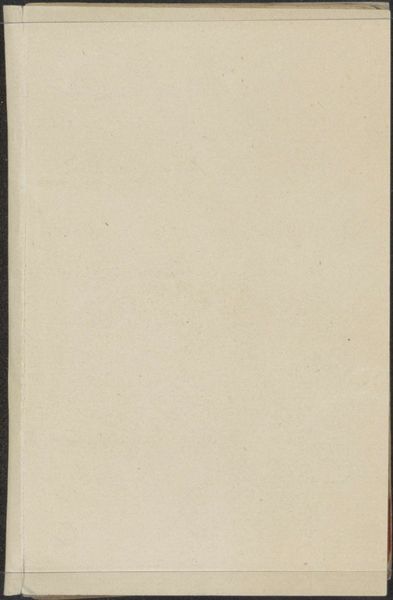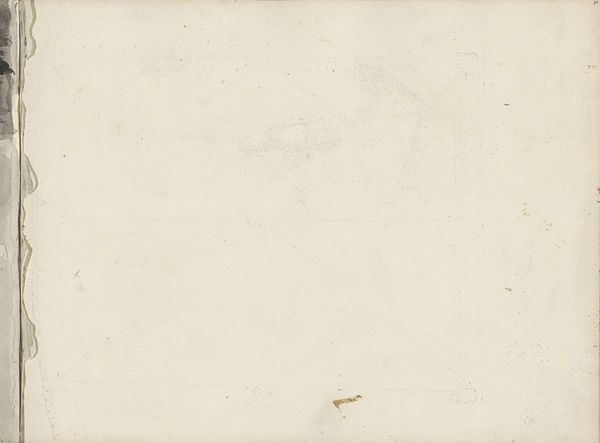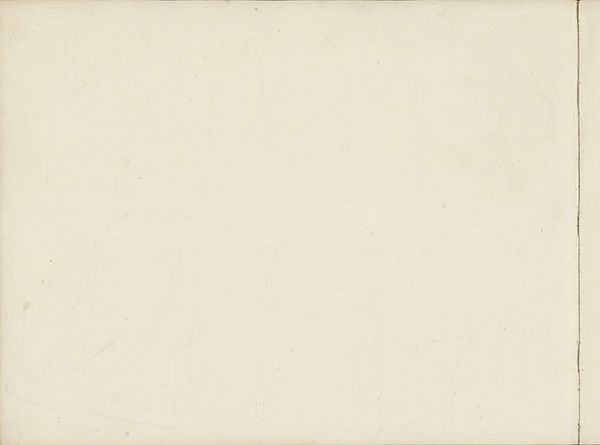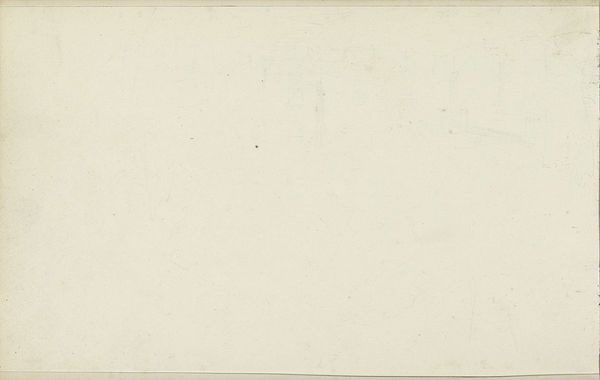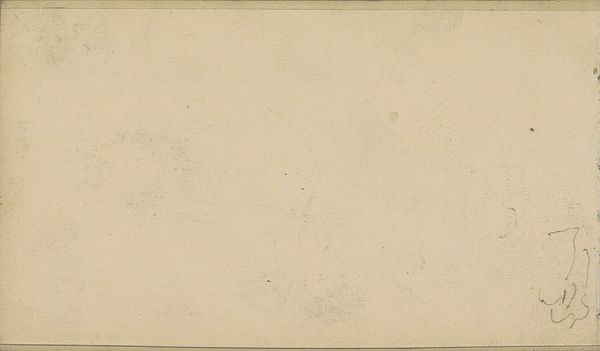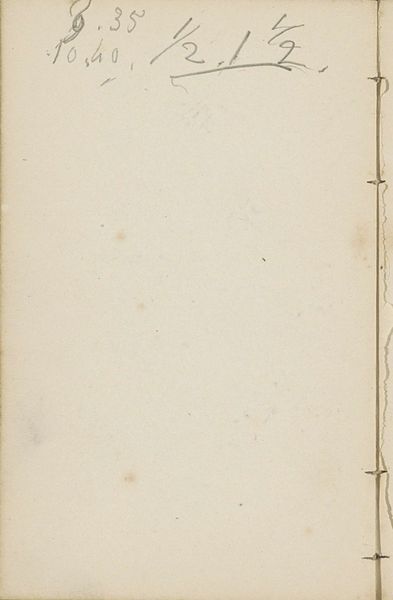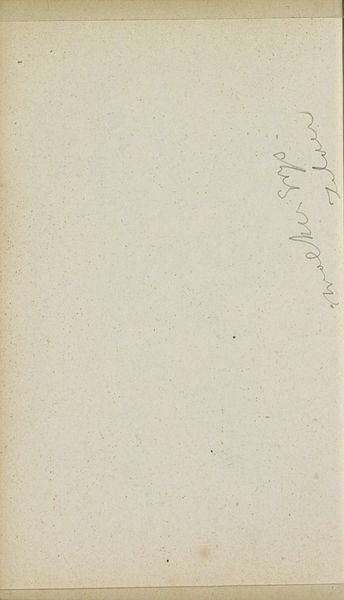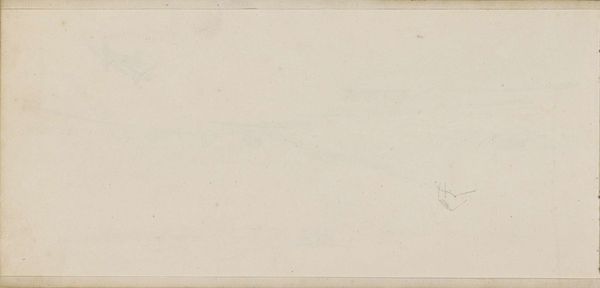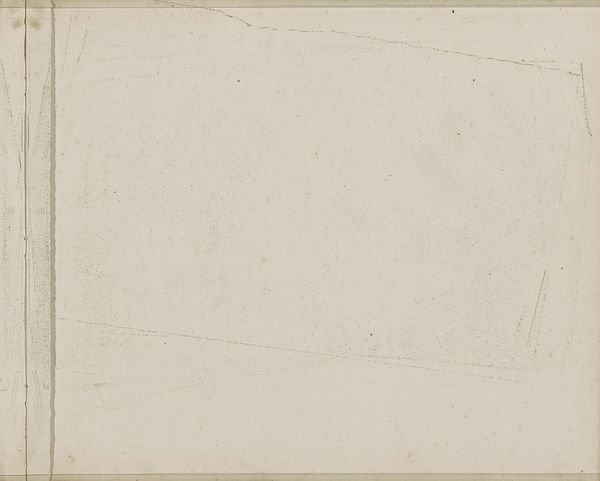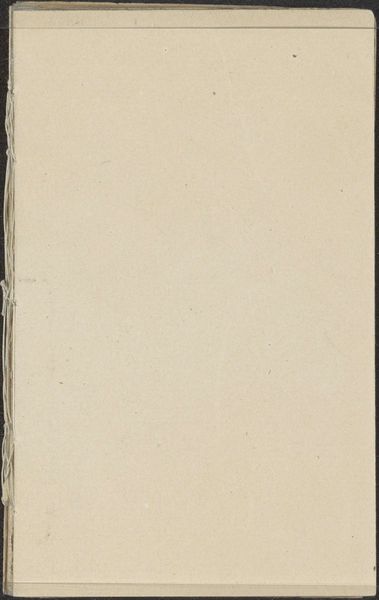
drawing, paper, ink
#
portrait
#
drawing
#
self-portrait
#
landscape
#
paper
#
ink
#
abstraction
#
history-painting
#
academic-art
#
modernism
Copyright: Rijks Museum: Open Domain
Editor: So this is 'Studie' by Johannes Tavenraat, dating somewhere between 1839 and 1872. It's an ink drawing on paper and is currently held at the Rijksmuseum. Honestly, at first glance, I'm struck by the... emptiness? The vast expanse of paper is only broken by that small mark at the bottom. What do you see in this piece? Curator: I see a composition defined by absence, where the negative space dominates the visual field. Note the texture of the paper itself; the artist uses this as a structural element. The off-white hue and subtle variations create a depth, a layering. The mark at the bottom acts as a focal point, almost an anchor in this sea of blankness. How does that mark relate to the rest of the space, do you think? Editor: I suppose it's there to give it context? I can see that its presence does give some balance to the composition... but still the negative space overwhelms everything. What does that communicate? Curator: It directs the eye and invites inquiry. Does that single shape represent something discernible, a landscape element perhaps? Or is it purely an exercise in form? What are its internal structural relationships and proportions? By creating an unequal weight and breaking symmetry in that way, we perceive the whole sheet as one cohesive expression. Editor: I guess I was so caught up with the negative space that I hadn’t fully considered that bottom section and its impact. Now, thinking about the materials, and their interplay, helps to tie the whole composition together. Curator: Precisely! Paying attention to how forms create asymmetrical, unequal tension can be deeply engaging. Editor: It has broadened my perspective to view that small shape less as a detail and more as a signifier within the larger structural framework. Thanks!
Comments
No comments
Be the first to comment and join the conversation on the ultimate creative platform.
